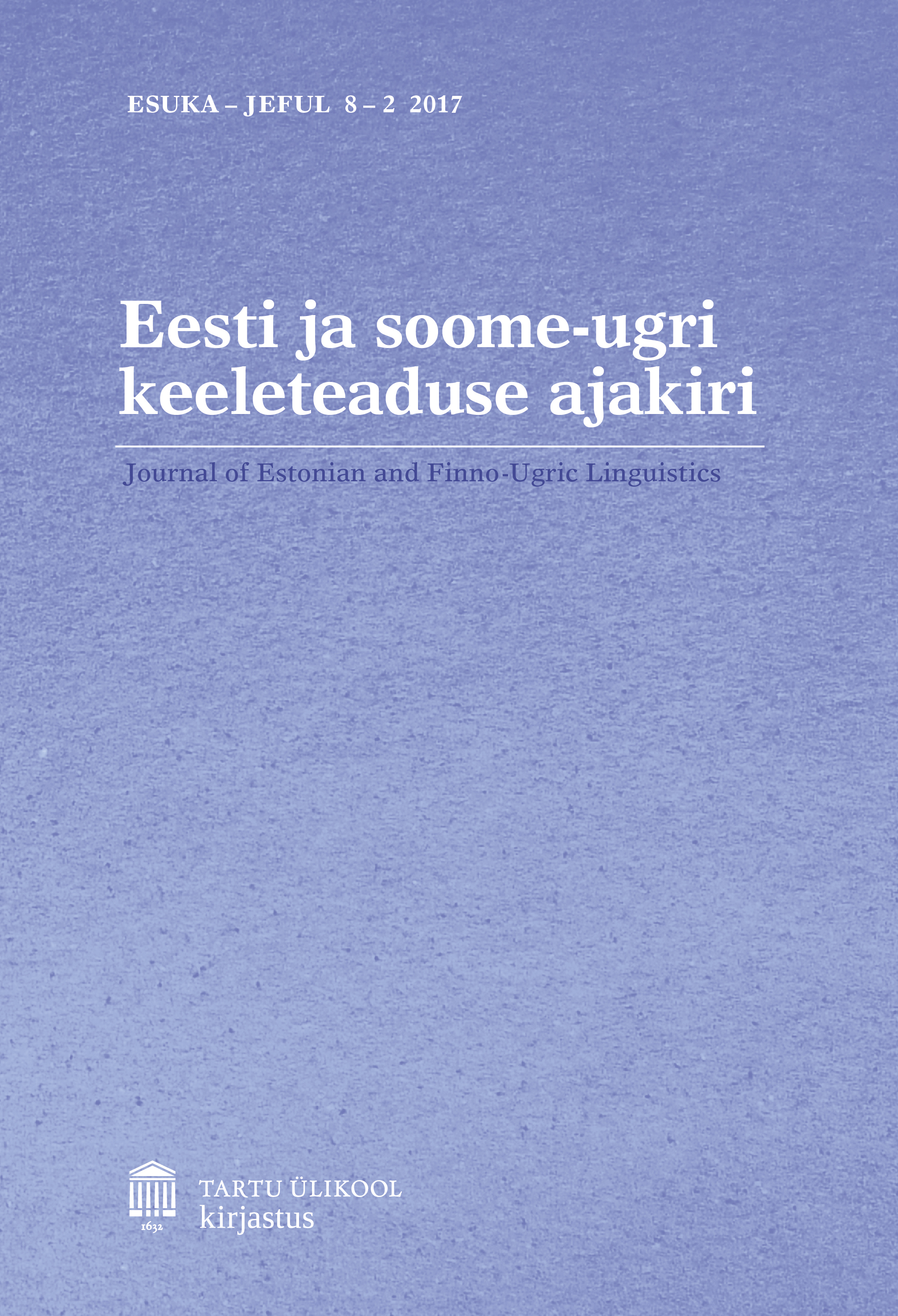Grammaticalization of complex items: Estonian <i>nii et</i> ‘so that’, ‘so’
DOI:
https://doi.org/10.12697/jeful.2017.8.2.02Keywords:
complex grammatical item, pragmatic particle, grammaticalization, pragmaticalization, recycling of grammar, sentence peripheries, insubordination, EstonianAbstract
The article discusses the development of complex items that may carry grammatical as well as pragmatic functions. We describe the development of the Estonian complex conjunction nii et ‘so that’ which started out as the free combination of the proadverb nii ‘so’ and the conjunction et ‘that’, and has currently reached the stage of pragmatic marker located at the sentence-peripheral position and expressing CONCLUSION. The synchronic corpus study analyzes 862 examples and observes the functional and the formal variation of nii et ‘so that’, ‘so’ as well as the association between them. The data suggests that nii et has four formal variants (nii, et; nii et; niiet; niet) and its functions have developed in the following chain: MANNER > CONSEQUENCE > CONCLUSION. The data suggest an association between the functional and formal variation. The development of nii et displays the main mechanisms of grammaticalization (desemanticization, decategorialization, extension, erosion) and is associated with re-cycling of grammar, and pragmatic roles of sentence peripheries.
Kokkuvõte. Anni Jürine ja Külli Habicht: Liitsete üksuste grammatiseerumine: eesti keele nii et. Artiklis käsitletakse liitüksuste grammatiseerumist (pragmatiseerumist) eesti ühendsidesõna nii et näitel. See algselt eri lauseosadesse kuulunud sidendav üksus on reanalüüsitud esmalt alistatud osalauset alustavaks ühendsidesõnaks ja lõpuks lause perifeeriatesse paiknevaks pragmaatiliseks partikliks. Sünkroonilises korpusuuringus analüüsitakse 862 kasutusjuhtu ning selgitatakse välja vormi ja funktsiooni seosed grammatiseerumisprotsessis. Üksusel on neli vormivarianti (nii, et; nii et; niiet; niet) ja tema funktsioonid on kujunenud ahelas VIIS > TAGAJÄRG > JÄRELDUS. Üksuse areng järgib grammatiseerumise keskseid mehhanisme (desemantiseerumine, dekategoriseerumine, ekstensioon, erosioon) ja on seotud grammatika taaskasutuse, insubordinatsiooni ning lause perifeeriate pragmaatiliste rollidega.
Võtmesõnad: liitne grammatikaüksus; pragmaatiline partikkel; grammatiseerumine; pragmatiseerumine; grammatika taaskasutus; lause perifeeriad; insubordinatsioon; eesti keel


